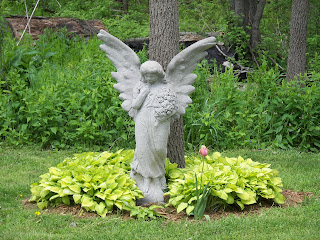+-+Copy.JPG)

.JPG)
I took the butterfly pictures this morning and the caterpillar picture last week.
This big boy is a joy to watch. Large and black with yellow spots and chevrons. He has a bright orange eyespot with a round, black-centered pupil. Typically the male has larger and brighter coloring.
The egg is yellow and the 2 inch caterpillar is very distinctive. This one was on my sage. They especially like Queen Anne's lace (Daucus carota) and other members of the carrot family. Also some members of the citrus family, rue and broom.
The Eastern Black Swallowtail has 2 to 3 broods from February through November. Preferring open spaces including gardens, farmland, meadows, and banks of watercourses; seldom in woodlands.
They often may be photographed on phlox (as above) and milkweed. They will flit, drift and stall.
When planning a garden or pots to attract butterflies, consider: phlox, rue, parsley, and sage. Allow some Queen Anne's Lace and milkweed to stay in your wildflower gardens. There are hybrid species of annual broom that are quite beautiful if you can't farm some into your crops.
The large butterflies have been rather scarce in gardens this year. From what I've read it's because their wintering sites were disrupted or destroyed by severe storms. All the more reason to make our yards and gardens butterfly friendly in hopes of, at least, encouraging the resurgence of the species.
A cup of coffee while sitting in the porch swing and a beautiful Eastern Black gliding from phlox flower to phlox flower is the perfect way to start the morning.












.JPG)

.JPG)




.JPG)
.JPG)
